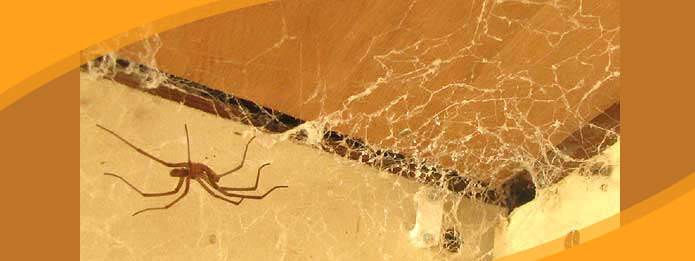Spider Control: Know the Signs of a Spider Infestation

If you are like most homeowners, you probably shudder at the sight of a spider scuttling across your kitchen floor or clinging to your bedroom ceiling. While these arachnids might look scary, most species are harmless and the ones you see likely made their way indoors by accident. Chances are, there are certain stuff such as food, water, and domestic pests that attract spiders. However, if you start seeing them more often and in multiple rooms, you may have an infestation. Learning some of the warning signs of this problem may help you understand when to call our spider control team for assistance.
Increased Spider Sightings
Seeing the occasional spider in your home usually is not much cause for alarm, but when you start seeing more of the same species, you may have a problem. Spiders tend to breed rapidly and lay their eggs in dark, moist places, such as basements, and from there, they can spread throughout your home.
Spiders usually like to hide in corners, cracks and crevices and in locations where they are less likely to cross paths with humans. Seeing spiders on a daily basis where they might not tread otherwise may mean you have an infestation, so you may not want to ignore these sightings.
Webs and Tunnels
Depending on their species, spiders create all different kinds of webs. Most spiders create spiral orb webs but others, such as funnel weavers, create tunnels with trip wires at the entrance so they can ambush prey as it wanders by. You might be able to identify what type of spider problem you are looking at depending on the kind of webs you find.
While most species of spiders are harmless, larger specimens, like those that create funnel webs, may bite if you try to disturb their webs or handle them. Calling in our spider control team to remove the infestation can help keep you and your family safe.
Visible Egg Sacs
Spider mating seasons tend to vary depending on species, but many breed in the early fall and create their egg sacs shortly after. If you start to see multiple sacs around your garage, attic or basement, you may soon have to deal with a population explosion of arachnids. One sac can contain hundreds of spiderlings, so it is important to have them removed before they hatch.
Spider egg sacs are commonly found on the undersides of patio furniture, in corners of dark rooms and in the clutter in your spare room or attic. They resemble small cotton balls and are usually surrounded by webbing. The mother may or may not be present, as while some species guard their egg sacs, others simply create them and move on.
Other Insect Sightings
Spiders tend to flock where they can find food easily, so if you have numerous flying insect species around your home, this may invite spiders. Flies, wasps, bees and other prey can keep spiders fed consistently, and unless they are the wandering type, those that make webs may take up residence in your home.
You can reduce the spider populations’ food supply by controlling the number of flying insects in and around your property. If you have a problem with larger wandering spiders, you may also be hosting a population of crawling insects, such as cockroaches or beetles, that attract these hunters. Our spider infestation team can perform a sweep of your home that may reveal other pests.
Unexplained Bites
Smaller spiders have fangs that cannot pierce human skin; however, larger species may bite when startled or cornered. Some bites occur when a spider is hiding in an article of clothing or a shoe and it is disturbed by a human arm or foot. Unexplained bites may indicate a spider infestation.
Spotting the occasional spider in your home is usually not a cause for worry, but when they start to multiply, our pest control services can help. Call us today.